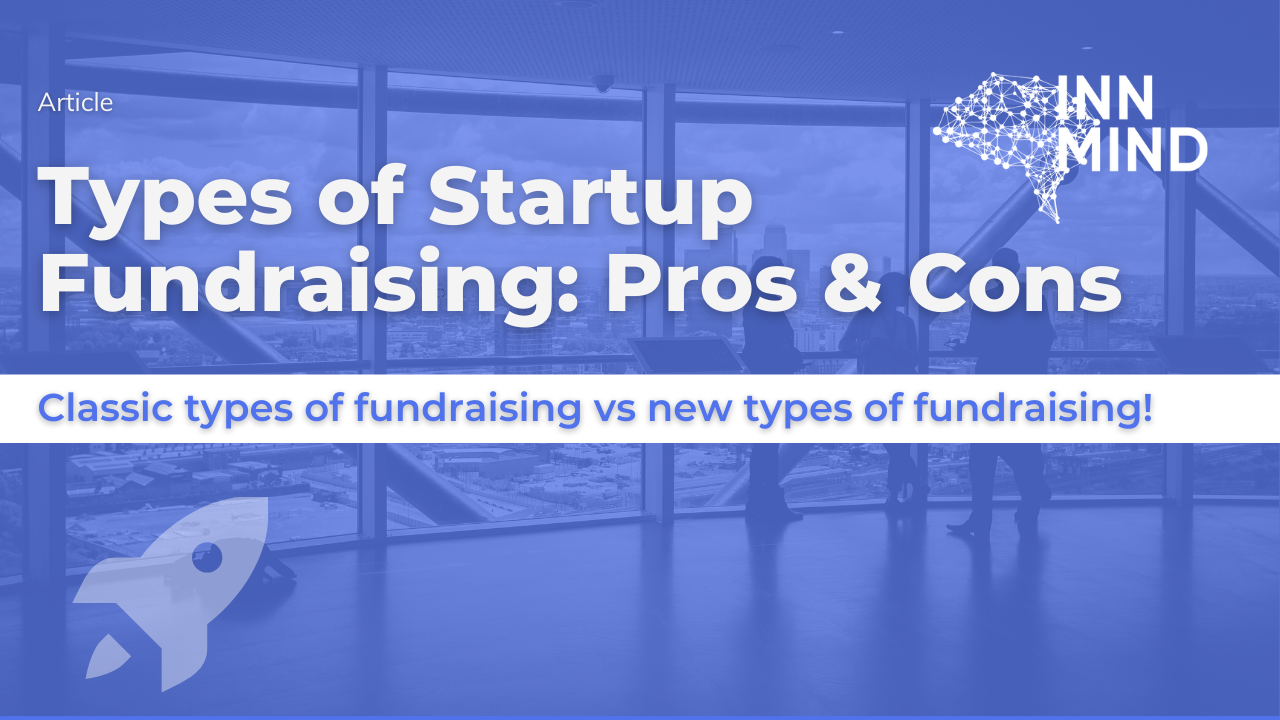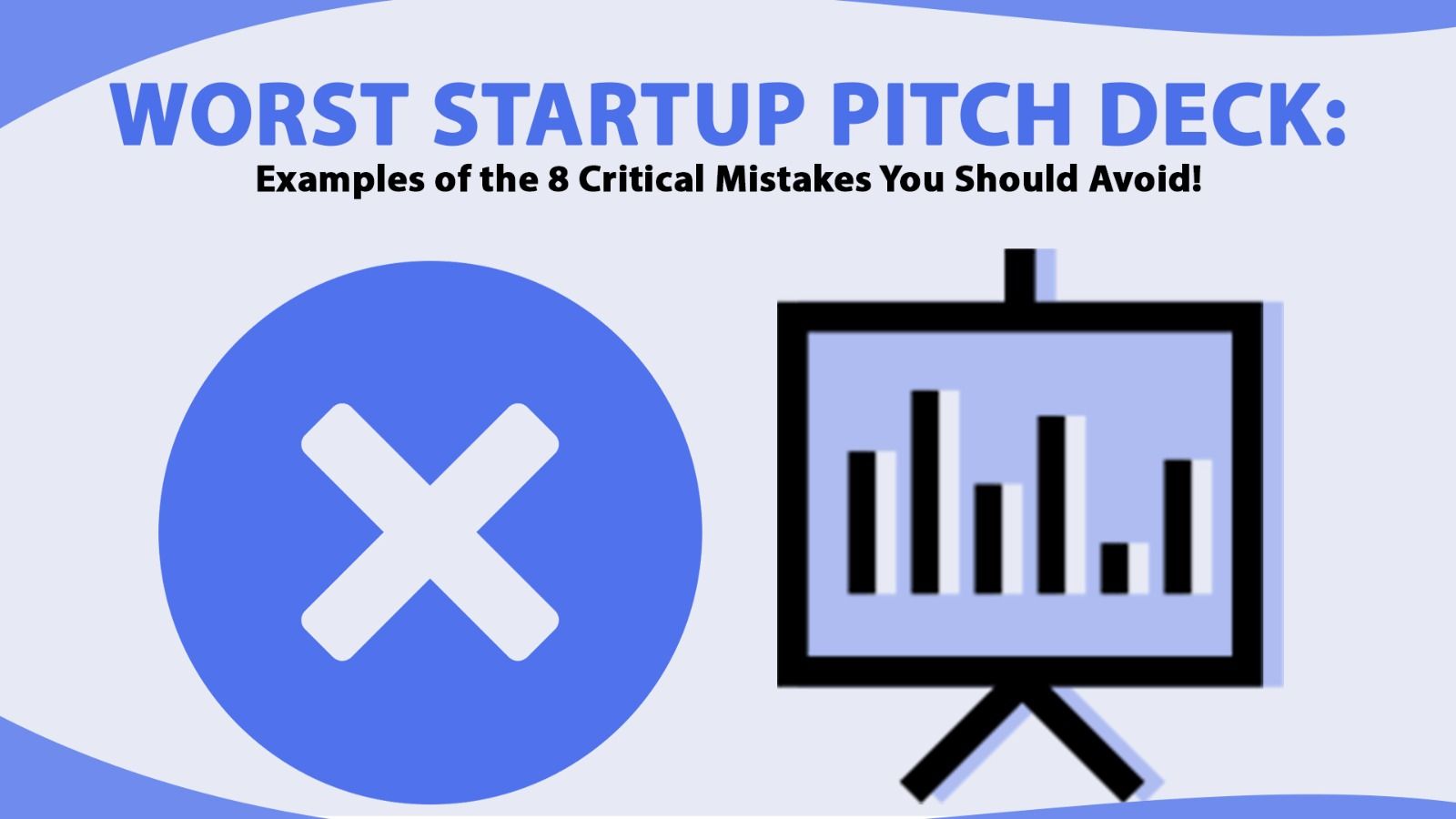How To Prepare For A Startup Pitching Session?
A step-by-step guide on how to prepare for a startup pitching session, including an example of a successful pitch.

This is one of the most common questions we receive from founders before each one of our InnMind VC Pitching Sessions. So, in order to help you out, below we’ll cover how to prepare for your investor pitch in a way that significantly increases your chances of making a good impression and attracting funding.
Here you can get templates of a startup investment pitchdeck composed by InnMind experts & VC Professionals!
Research the audience
What kind of startups are the investors you will pitch to looking for? What industries, verticals, development stages, investment amount, etc.
These are important details to know, as it will help you emphasize on the aspects of your business which are likely to be interesting to the investors you are speaking to.
Each VC investor is often exposed to hundreds of startups and investment opportunities each month. Because of this, they often have a system (checkboxes of criteria they expect) that helps them narrow their choice down. It’s your job to hit as many of the checkboxes in the investor's mind as possible.
For example, if the VCs you are presenting to are investing only in startups that are already generating revenue, it would be a huge mistake not to mention your revenue numbers. Or, if a potential investor is interested in GameFi startups with traction, it will be wrong not to mention your daily or monthly users and other relevant metrics.
If you are participating in an InnMind pitch session, we will match you with investors who are likely to be interested in your project according to your startup stage, vertical and other criteria.
However, it’s still the founder's job to make them interested.
Get your startup pitch deck ready for the time limit
In most pitching events you have two or five minutes to make your presentation. This is a very short time, so you should prepare accordingly.
Once the time is up, the moderator will stop you regardless if you are done or not. Because of this, make sure that you can realistically finish your presentation with at least 30 seconds to spare when you are practicing. This way you’ll usually be able to finish in time at the actual event even if not everything goes as smoothly as you’d like.
A mistake that founders sometimes make is to use a very detailed investor pitch deck that is designed to present the business in 15 minutes or more. In order to condense the presentation, they sprint over the slides and only superficially touch on each one.
First, this doesn’t leave the viewers with enough time to absorb (read) the information on the slides. For a 2-minute elevator pitch, you need to make sure that the slides are not text-heavy and that you leave them on for enough time (at least 10 seconds) to allow people to read them. For a 5-minute startup pitch, you can have a bit more text, but it’s still not a good idea to create very content-heavy slides.
Second, having too many slides with too much content and sprinting through them makes the presentation feel like it's all over the place. Touching on 20 different topics very superficially usually doesn’t leave a good impression on the investor. It’s better to talk about 5 things but to do it properly.
As an entrepreneur, you need to sell and present your startup every day, not just to investors, but also to business partners, team members, contractors, journalists, etc. So developing your pitching skills is essentially important for every startup founder in his entrepreneurial journey.
You should think of the pitch of your business as a trailer to a movie. It’s not meant to give out the whole plot, but to inspire interest in the viewers. After the presentation is over, the investor can always decide to “watch the whole movie” by inviting you to talk privately in depth.
So, if you have a detailed deck, make a lean version of it that you can use in a two or five-minute presentation. You can find more about this in our "How to raise web3 funding" guide.
Focus exclusively on the important topics
The generally accepted slides (topics) to include in your pitch deck are:
- Introduction: What does the company do?
- Problem: What consumer need are you satisfying?
- Solution: What are you building, what’s the main idea?
- Business model: How do you plan to earn money?
- Traction (or validation): Proof that it is working (problem-solution fit).
- Market size (upside): Why is it worth investing in this risky project?
- Competition: How are you different from other solutions?
- Strategy: How are you going to make it work – grow, make money, etc.
- Team: Why are you the right people for bringing your startup to success? Do you have the required skills?
- Finance/Ask: How much funding are you looking for and for what?
Including additional topics is usually not wise - you won’t have enough time. You might even be forced to cut out some of the topics from above in order to concentrate on the important ones.
When making the decision about what to cut, make sure to preserve the topics which contain the most interesting information about your business – the things which will make you stand out.
Remember that on pitching events the two keys to success are to provide the expected information, but also to differentiate yourself from the other startups.
Problem, Solution, Traction/Validation, and Team are the core topics of every presentation. Whatever you do, make sure those topics are covered in one way or another.
Look at the Revolut pitch deck example, that helped to raise £1.5 mln (approx. $1.9 mln) in its Seed investment round back in 2015 when Revolut was still on early development stage 👇

Please don’t use a unique structure for your presentation (you can check our video on common pitch deck mistakes). Remember the checklist of the investors? A unique structure makes it less likely that you will give them the information that they are expecting. If your presentation confuses them in any way, they won’t waste time asking questions – they’ll simply move on to the next startups.
A startup pitch should impress with the content rather than the structure (or any other unique quirks or features).
Prepare to deliver your pitch clearly
There are generally two ways to prepare for a pitch. The first one is to have a general idea of what you are going to talk about and to improvise. The second is to learn the pitch by heart.
Unless you have a lot of experience presenting in public and you have pitched on this exact topic multiple times, the first option is a mistake. A few minutes is very little time, and even if you are not nervous, improvising will usually push you over the time limit.
For most people, pitching sessions are a high-stress environment. There are multiple startups, multiple investors, time limits, and the stakes are high. Knowing your presentation word for word can give you peace of mind.
The best way to practice delivering it fluidly is to present it in front of people. Ask family members or teammates to listen to you a couple of times.
This way you’ll get practice, but you’ll also get feedback. Don’t underestimate the opinion of a layman. If your friends and family are confused at any point, it’s a good idea to make changes for the sake of clarity. Keep in mind that not every investor has domain expertise.
Last but not least, the best way to overcome stage fright is to be mindful of the stakes. It’s a great opportunity, so you shouldn’t take it lightly – you should prepare. At the same time, even if you don’t make the best of impressions, life will continue and so will your startup. Even a failure at this particular event could be productive in the long run. If it helps you realize your strengths and weaknesses and sharpen your pitch, then it’s a net positive.
How to pitch on Zoom
First, make sure that your technical setup is working as intended. Having the best pitch in the world doesn’t mean a lot if your microphone doesn’t work and the other people in the group call can’t hear you properly. Test your camera, microphone, internet connection, and your ability to share your screen and navigate your presentation while talking.
Second, a cheat code for video call presentations is to have the text of your presentation printed out on a piece of paper. Reading word for word is usually a bad idea because it doesn’t sound natural. That said, it’s still a possibility if you haven’t practiced enough, and talking fluently in English isn’t your main strength. Nevertheless, even if you don’t read word for word, having the text there as a reminder in case you get stuck is always reassuring.
If you decide to go for the improvisation route, you should print out your main talking points as bullets instead.
Last but not least, make sure you look presentable. In the realm of startups, this doesn’t mean suit and tie, but it still makes a good impression to look neat. Remember that investors are humans as well, and they prefer (consciously or not) to work with founders who give out the right vibe – smart, neat, well-mannered, and professional.
Prepare follow-up materials
After the session, hopefully, you’ll draw the attention of at least one investor. They’ll likely invite you to talk privately. Make sure that you can send them a follow-up email with a more detailed deck, a business plan, or a lean canvas. If an investor gets interested in the trailer, make sure to be able to show them the whole movie while the impression is still fresh.
Example of a successful pitch
ScaleSwap is a great example of a good pitch at InnMind VC pitching session. The first thing to notice is that the presenter (Ralf Gerteis, the co-founder of ScaleSwap) didn’t go for the learn the pitch by heart option, but rather decided to talk freely. The benefit is that the presentation sounds more conversational and natural, and as we already mentioned the main risk is that you might run out of time without presenting clearly all the key information for your startup.
Notice that Ralf minimized this risk by having a very concentrated presentation – he used just six slides and didn’t go into detail in most topics, which left him with more than enough time to talk slowly and calmly about the project.
As a result, the pitch sounds natural and at the same time works as a great preview about the project without going into unnecessary details:
- Slide 1, Intro: What the startup does in one sentence.
- Slide 2, Problem: Ralf showed past solutions with their problems and presented L2 IDO (ScaleSwap’s solution) as the next logical step.
- Slide 3, Solution: Rather than talking about individual features, he showcases how the platform addresses the three biggest pain points of users.
- Slide 4, Solution: The founder gives a bit more technical details of what the product actually does.
- Slide 5, Market and Competitors: This is a content-heavy slide, so he spends a bit more time on it while not going into unnecessary details. Notice the slides deals with two topics at the same time – the competitive advantage of ScaleSwap and the current market size.
- Slide 6, Team: Rather than talking about every single person (he gives a bit more info in the questions later), he gives a quick overview of the team and takes time to talk about their fundraising success (a point of validation of the project).
- Slide 5, Ask: Necessary information about the token, requested funding, fundraising structure and goal.
- Slide 6, Strategy: Explains how they plan to grow the project.
InnMind pitch deck template
Of course, you don’t need to reinvent the wheel. We’re more than happy to send you a pitch deck template that you can use as the foundation of your presentation!
At the end of the day, preparing a competent pitch is one of the easier parts of making your startup project successful. That said, doing it well is quite important, so don’t let success slip through your fingers by underestimating the task!
Subscribe to InnMind
Subscribe to InnMind using the links below to stay up to date with upcoming events, releases, and news from the Web3/Cryptocurrency/NFT/Metaverse world of startups and investment funds:
Read other popular posts in our blog










